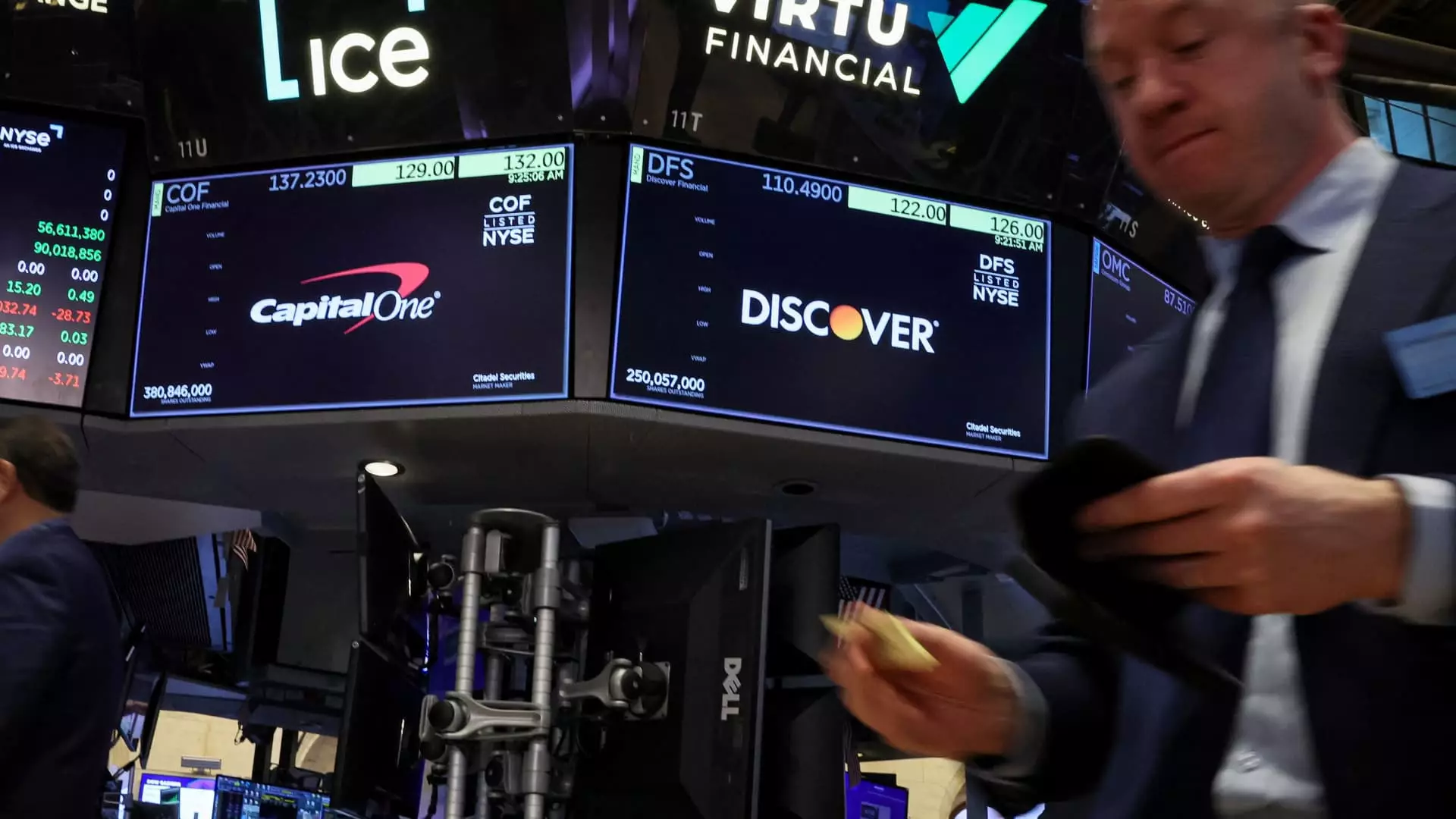The financial sector is perpetually in flux, driven by a complex web of competition, regulation, and consumer behavior. In this chaotic environment, mergers and acquisitions serve as substantial strategic moves for consolidating market power and enhancing competitiveness. Currently, Capital One’s proposed merger with Discover Financial Services presents a tantalizing glimmer of potential for soaring stock prices. Recently analyzed by BTIG, the merger could inflate Capital One’s stock to an astonishing $427 per share, suggesting an incredulous 137% upside from recent values. However, while these projections are eye-catching, the implications of this deal may not be as bright as they seem.
Unpacking BTIG’s Rosy Outlook
On the surface, BTIG’s bullish prediction may reflect genuine optimism. By combining resources, Capital One could theoretically harness Discover’s underutilized payments network, thus tapping into a larger segment of the prime transactor credit card market. Analysts point out that such advancements in technology may grant Capital One the edge it needs to effectively compete against behemoths like Visa and Mastercard. Yet, one must ask—does this shiny outlook withstand scrutiny in the harsh realities of modern finance?
The recurring concern is that the fundamental aspects of banking and credit markets are not merely reliant on technology or monopolistic maneuvers. They are intricately woven into the fabric of consumer behavior and economic fluctuations, which can turn predictably positive projections into cautionary tales. Moreover, analysts should remain aware of historical precedents where over-optimism led to significant market corrections, particularly when regulatory scrutiny becomes a factor.
Regulatory Hurdles and Market Realities
The anticipated merger is currently under examination by federal regulators, casting a shadow on its feasibility. Reports that the Justice Department may have reservations regarding the implications of this merger for the competitive landscape in subprime lending are alarming. In an environment rife with antitrust litigation and public scrutiny, regulators are likely to oppose any deal that threatens to weaken competition or limit consumer choice.
Any responsible investor has to question the long-term viability of Capital One’s stock price in a pre-merger limbo. While BTIG remains optimistic about Capital One’s standalone performance—with a revised price target suggesting a 15% upside—this should not overshadow the potential pitfalls of failed mergers, which can lead to plummeting stock prices rather than the soaring heights analysts predict.
The Investor Sentiment: A Double-Edged Sword
Capital One’s recent stock performance shows promise, gaining nearly 1% in value following BTIG’s report, but the gains were more muted in the face of market uncertainties. The swings in investor sentiment could significantly influence the performance of the stock going forward. With analysts from various firms maintaining a bullish stance, we see a fragmentary but prevalent belief that this merger will resolve favorably. However, the inherent volatility of the financial markets does not guarantee that enthusiasm alone will be enough to sustain or justify these lofty price targets when regulatory challenges loom overhead.
Moreover, while Capital One has strengthened its conservative underwriting approach to mitigate risks associated with a weakening consumer base, this strategy could also alienate portions of its client demographic. Maintaining a delicate balance between profitability and accessibility in lending can be crucial to sustaining long-term growth.
A Cautionary Approach to Forward Momentum
Given the brewing conflicts surrounding the merger, it would be prudent for prospective investors to temper their excitement with a dose of skepticism. The potential of repurchasing $25 billion in stock over the next three years, highlighting Capital One’s financial flexibility, may cushion some losses, but this should not mislead investors into perceiving invulnerability against market erosion.
Furthermore, the broader implications of this merger reach far beyond the balance sheets of two financial giants. They dive into the ethical considerations of monopolistic practices and the potential burden they place on the consumer. Ignoring these aspects in favor of near-term financial gains runs the risk of hollowing out the very values that underpin a healthy financial system.
In the end, Capital One’s ambition to execute a high-stakes merger with Discover Financial Services presents an uncertain landscape where flashes of opportunity exist alongside ominous clouds of doubt. Investors would do well to navigate this terrain with cautious optimism, keeping both short-term gains and long-term sustainability firmly in focus.

